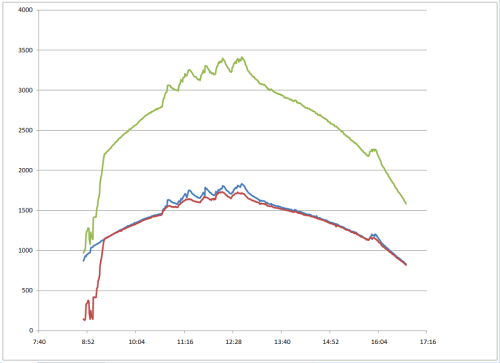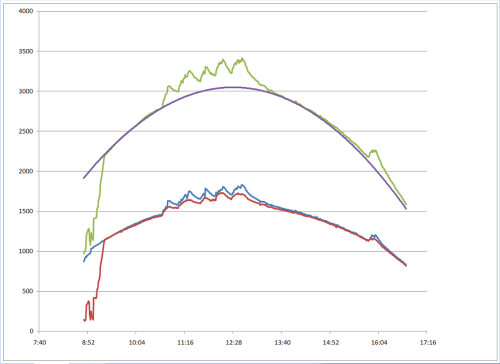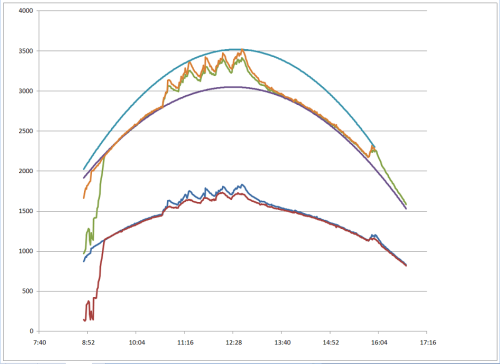I did another experiment to investigate how cooling the solar panels improves production.
I built this contraption to cool the panels down:
It is a popup lawn sprinkler mounted on the side of the roof and attached via a garden hose.
Here is todays production til about 4:45PM
The blue and red lines are the DC watts from each of the 2 different strings. The green line is the total output in AC watts ( after a small 4-5% inverter loss ).
5 times between 10:30am and about 1pm I turned on the sprinkler for several minutes, then once again at 3:45pm.
The red string is 6 panels on one part of the roof and 4 on another part – and the sprinkler only hits 6 of them. The blue string has all 10 panels on the main roof and the sprinkler can cool them all. The red string has a minor improvement, but the blue string is much better.
This chart includes a purple line that shows what the production would have been if the panels didn’t receive any water cooling.
The blue string peaked out at a 15.7% improvement from this line when it was being cooled ( significant variation can be attributed to fine tuning the sprinkler to not miss any panels )
This chart includes an orange line that is a prediction of what the improvement would have been if both strings had each received the full cooling.
The light blue line is a prediction of what output would have been all day if the cooling could have been applied consistently and continuously all day long.





Great data, thanks for doing the experiment,
I wonder what effect water droplets on the panel surface and moisture evaporating off them had; if it blocked and/or scattered some small percentage of photons that otherwise would have fallen on the panels? And still total power output was boosted by a significant amount; 15%, quite encouraging. I also wonder if a water film temporarily defeats anti-reflective coatings? These musings only reinforce the positive results documented above. If PV panels could be cooled effectively without a front surface water spray then my guess is output might increase a hair more beyond these already good results.
Does anyone have a guess regarding the thermal conductivity coefficient across the PV panel sandwich, from the front wafer surface facing the sun to the backside of the panel, which I think is often a plastic material except for Silicon Energy Inc panels with a glass back surface? Also important to know how well coupled thermally the interior wafers are to the front and back sealed surfaces in a typical PV panel sandwich. This information would be useful in any attempt to engineer a rear cooling system for PV panels.